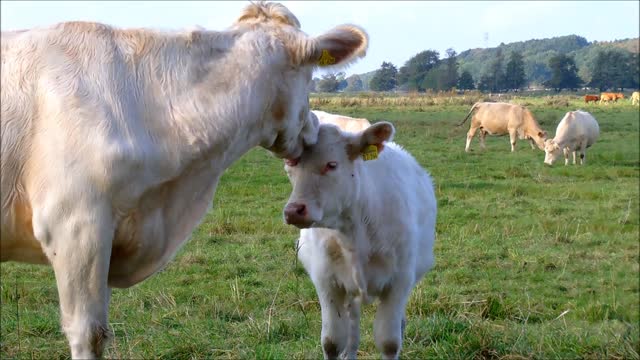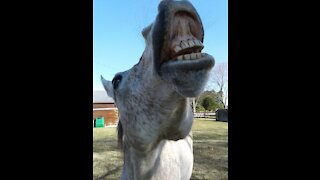Premium Only Content

Calf Showing Some Carring And Emotion To Gis Wife Cow
The vast majority of dairy farms are family-owned. Most dairy farmers are caretakers of the land from their parents, grandparents, or even great grandparents, and plan to pass it on to the next generation. Through the generations, dairy farm families have looked for ways to improve as stewards of their dairy cows and the land.
Many dairy farmers either raise their dairy cattle on pasture, in open-sided “freestall” barns or in open lots with shady areas depending on the climate and other geographic considerations. In freestall barns, dairy cows eat, drink, sleep and move around whenever and wherever they like.
Stalls are filled with soft sand, dry compost or mattresses filled with rubber or water so the animals have a dry and comfortable bed. Fans, automatic misters, shelter and ventilation systems keep cows content in cold and hot weather. Milking is usually done in a special area called a “parlor” set up with milking machines.
Wholesome milk starts with a cow’s healthy diet. Did you know that dairy cows have a four-chambered stomach? This makes them ruminants. A cow can digest the nutrients in many types and parts of plants that people can’t eat. The feed consists of a combination of forage, like hay or corn silage, grains (corn, wheat and barley), and protein sources, such as soybean meal, plus vitamins and minerals.
To keep dairy cows healthy, dairy farmers work with animal nutritionists to combine ingredients into recipes that meet the nutritional requirements of their cows. Dairy cattle also need access to fresh, clean water.
-
 0:04
0:04
PopoNextcarrot
3 years agoshowing some love to my cat
271 -
 0:39
0:39
Icechip10000
4 years agoMe showing you guys some characters
9 -
 0:13
0:13
Rlyn Kennedy
3 years agoShowing off some happy dance moves 😂🤣😃
63 -
 1:11
1:11
lonoshana
4 years agoPuddy Baby showing some love
25 -
 0:16
0:16
PlainJaneC
4 years ago $0.03 earnedWatch Taito Jack showing some love
2251 -
 17:02
17:02
Metal Detecting WWII Battlegrounds
2 days ago $0.02 earnedPersonal Items of Wehrmacht Soldiers Discovered - Eastern Front
62 -
 LIVE
LIVE
LFA TV
12 hours agoLFA TV ALL DAY STREAM - WEDNESDAY 8/13/25
866 watching -
 7:12:36
7:12:36
Dr Disrespect
8 hours ago🔴LIVE - DR DISRESPECT - THE FINALS - THE MOST UNDERRATED FPS GAME EVER?
159K16 -
 LIVE
LIVE
Barry Cunningham
5 hours agoCOULD PRESIDENT TRUMP HAVE A MUCH BIGGER REASON FOR TAKING OVER WASHINGTON D.C.?
4,637 watching -
 LIVE
LIVE
RiftTV
4 hours agoFuentes vs. THE WORLD? Tucker and Candace RAMP UP Attacks | The Rift | Guest: Simon Goddek
640 watching